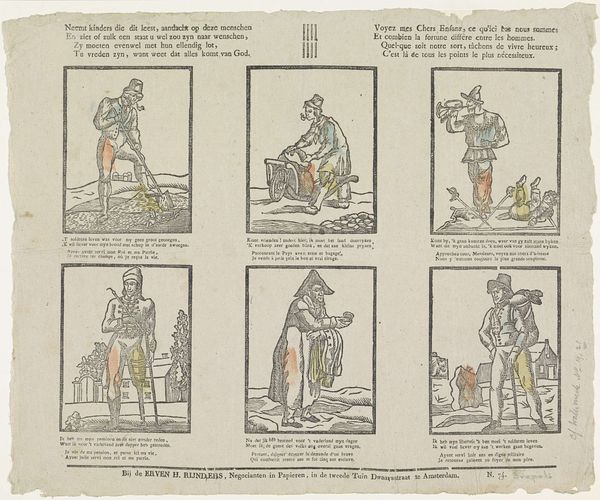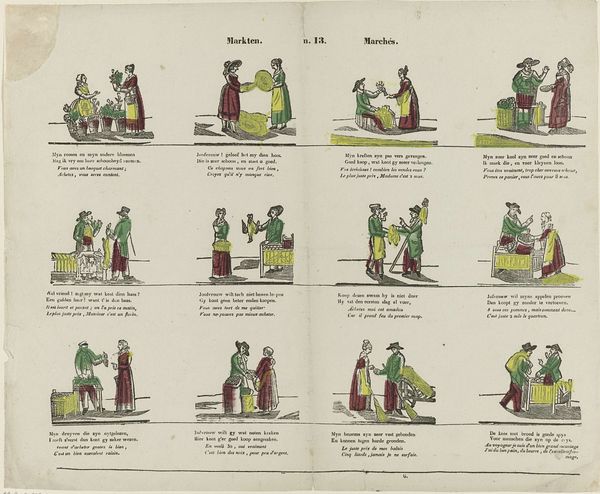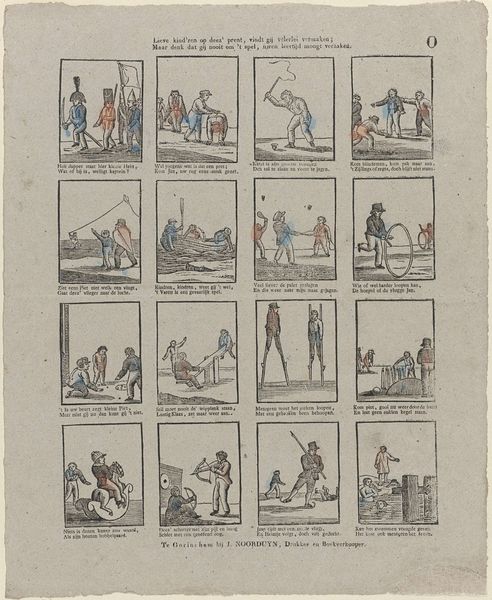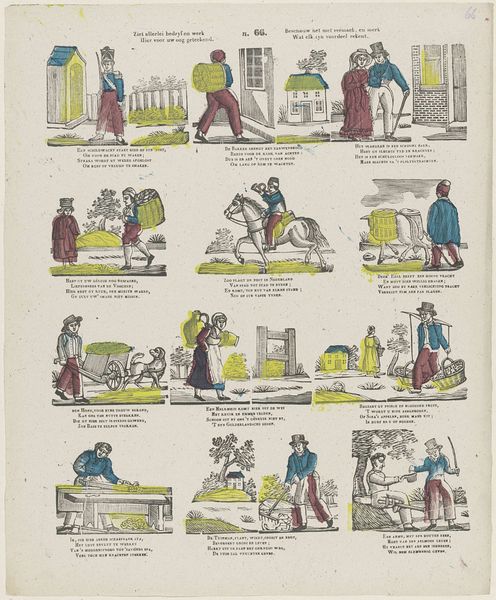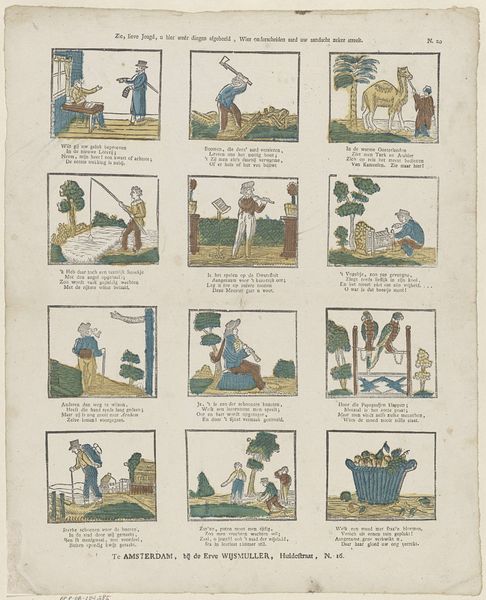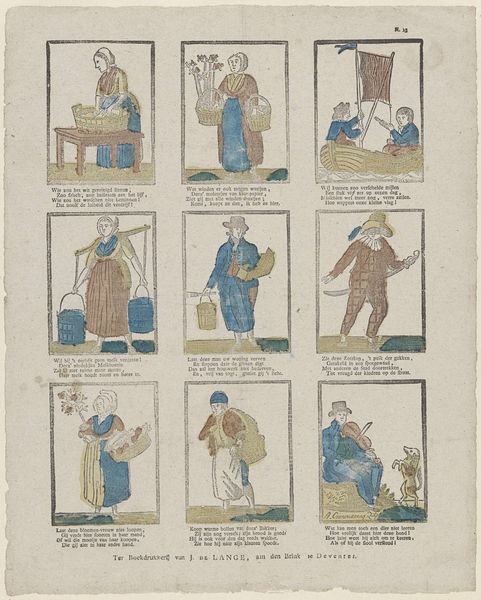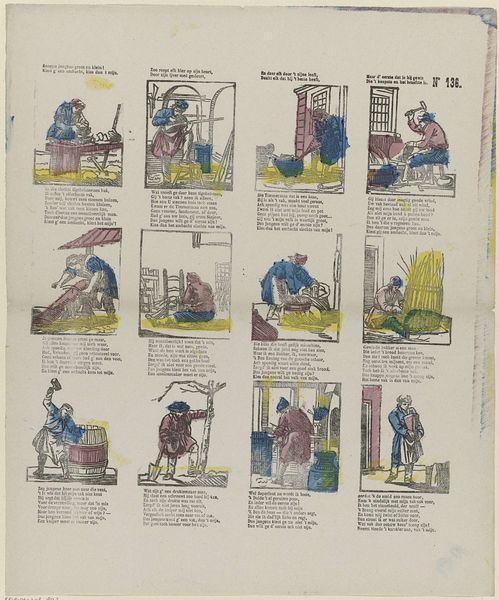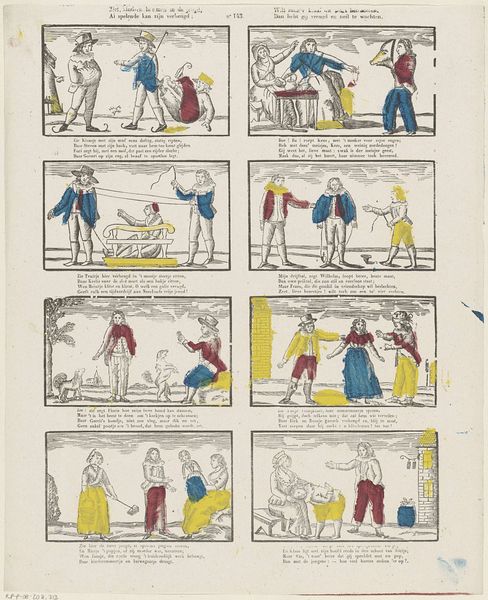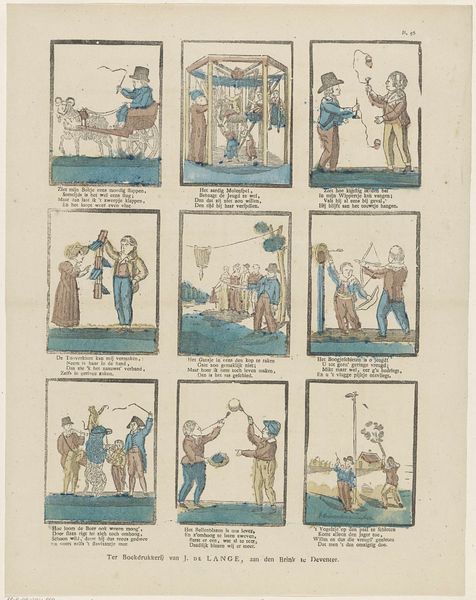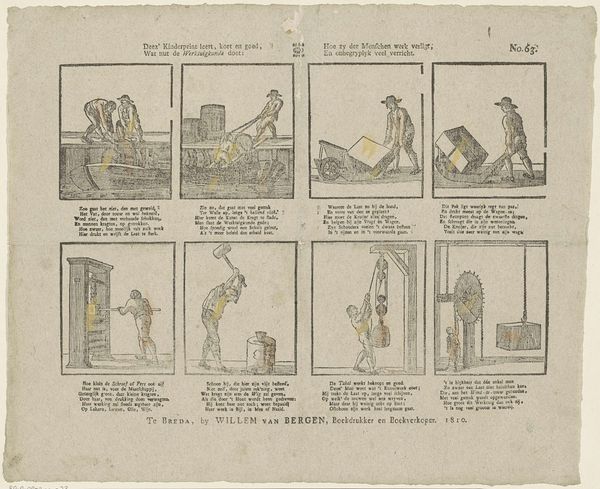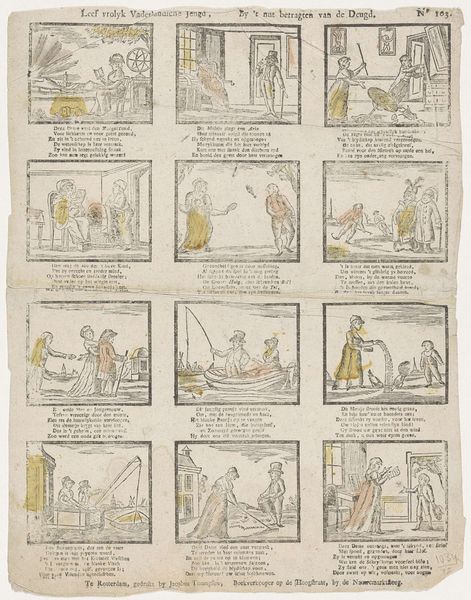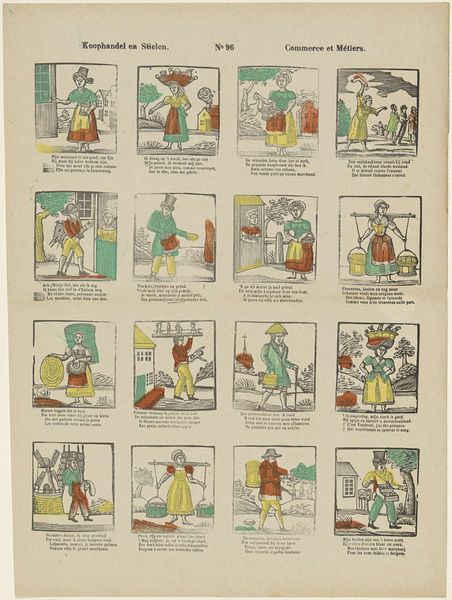
De leergrage jeugd zij in 't kort hier verbeeld, / Verscheiden bedrijven des daaglijkschen levens, / Bedenkt zij hoe 't eene van 't andere scheelt, / Dan strekt het tot nut en tot uitspanning levens 1833 - 1900
0:00
0:00
#
narrative-art
# print
#
folk-art
#
genre-painting
Dimensions: height 322 mm, width 395 mm
Copyright: Rijks Museum: Open Domain
Curator: So, we’re looking at a print titled "De leergrage jeugd zij in 't kort hier verbeeld…" made sometime between 1833 and 1900 by Glenisson & Van Genechten. It looks like a collection of scenes depicting various professions or activities. The printmaking seems rather rudimentary. How do you interpret this work? Editor: Well, it gives me a window into, like, the everyday life of ordinary people, almost like a snapshot of labor in a pre-industrial world. But how much does the medium itself – this printed format – shape its message? Curator: Exactly! The medium is integral. Think about who made this print, where, and for whom. It’s not high art hanging in a gallery. It's a mass-produced print, so how does this impact its purpose and audience? Editor: Hmm, that’s interesting. I guess I hadn't really considered that it was mass produced and affordable to be widely available to many. What would it have been used for, given the material it's made out of? Curator: It’s meant to be disseminated, perhaps even used for educational purposes for children of the time, due to the images including common childhood activities and short poetic description underneath each image. Think about the social implications. It provided glimpses into the diverse labor, promoting early development of cultural identity through printed material. Editor: That definitely changes my understanding. Instead of a detached observation of daily life, it was intended to actively engage children and teach them the value of labor! The rough print quality is part of that. Thank you for a new perspective. Curator: Indeed! By centering the means of production and social context, the artwork transforms to serve the everyday man, woman, and child as opposed to simply just being a pretty image.
Comments
No comments
Be the first to comment and join the conversation on the ultimate creative platform.
